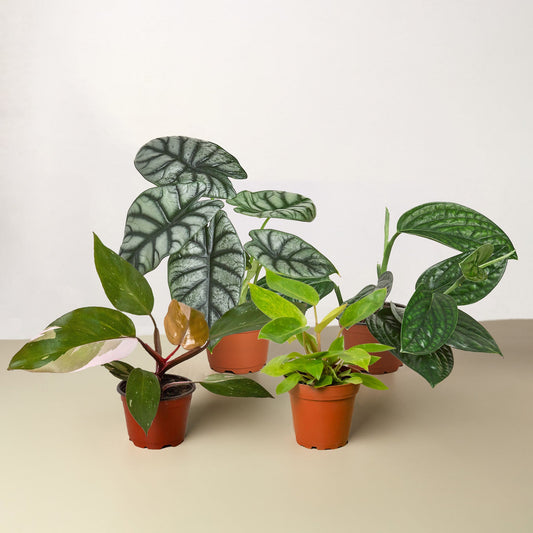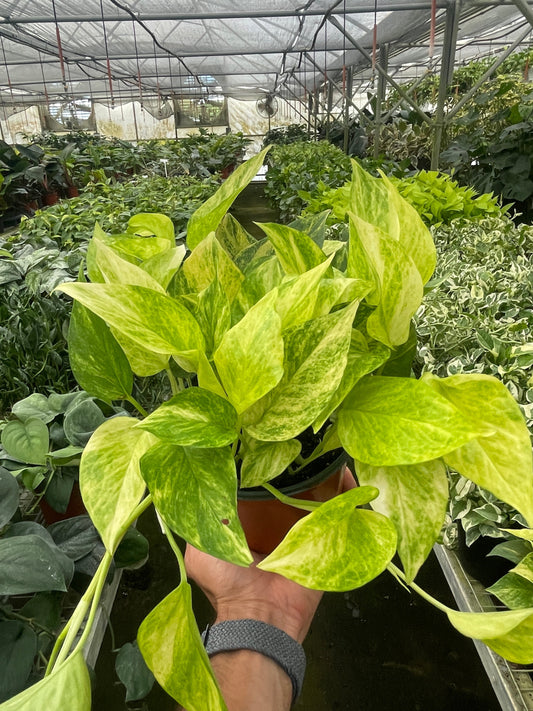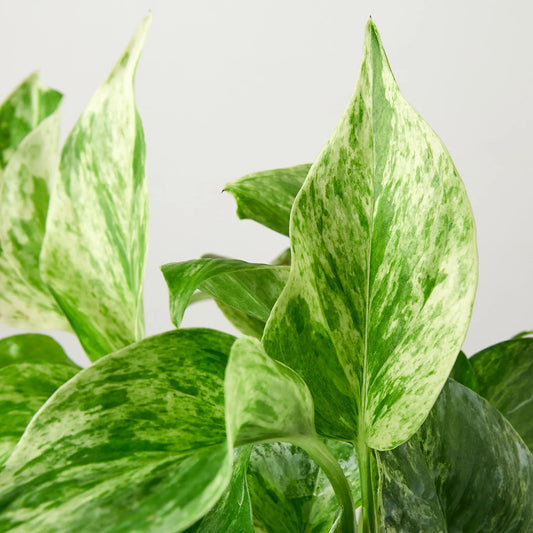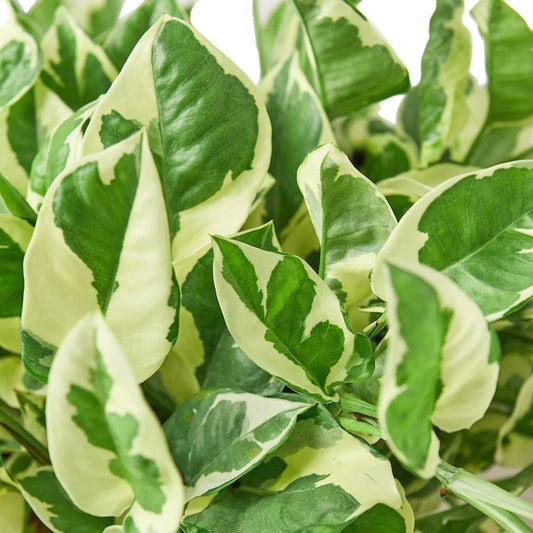Philodendron Imperial Red Aerial Roots: Everything You Need to Know
Cafe Planta Team
Philodendron Imperial Red is one of those plants that seems to catch everyone's eye. With its dramatic dark red leaves that slowly mature to a deep green, it's no wonder this plant has become a favorite among plant lovers. But what often goes unnoticed are its aerial roots, which can be as fascinating as the plant's foliage.
In this article, we're going to chat about everything you need to know about the aerial roots of the Philodendron Imperial Red. From what they are and why they form, to how they can affect your plant care routine, we'll cover it all. So, if you've ever found yourself puzzled by those little roots sprouting in odd places, keep reading!
What Are Aerial Roots?
Aerial roots are a unique feature of many tropical plants, including the Philodendron Imperial Red. Unlike the roots you typically find buried in soil, aerial roots grow above the ground. They can sometimes look like little tendrils or even like extra branches, but their main purpose is quite different.
In their natural habitat, Philodendrons use these aerial roots to climb trees and absorb moisture from the humid air. This ability allows them to thrive in rainforests, where they can latch onto tree trunks and reach for sunlight high in the canopy. While your home probably isn't a rainforest, these roots still play an important role in keeping your plant healthy.
You might notice aerial roots popping up from the stems of your Philodendron Imperial Red. They're perfectly normal and a sign that your plant is doing its best to mimic its natural environment. If you're wondering whether you should trim them or let them be, that's something we'll explore in the sections below.
Why Do Philodendron Imperial Red Develop Aerial Roots?
The development of aerial roots is a survival strategy for the Philodendron Imperial Red. In the wild, these roots help the plant anchor itself to trees, which is crucial for stability and access to sunlight. But even in a home environment, aerial roots serve several functions.
Firstly, they help with moisture absorption. Aerial roots can take in water from the air, which is especially beneficial in a home setting where humidity levels are often lower than the plant might prefer. This is why you might see more aerial roots developing in dry conditions.
Secondly, these roots are a part of the plant's natural growth pattern. They allow the plant to explore and expand as it would in the wild. So, if your Philodendron is growing lots of aerial roots, it’s likely a sign that it's thriving and looking for new ways to support its growth.
And lastly, they can also help with nutrient absorption. While not their primary function, aerial roots can still absorb some nutrients from the air, which can be a slight bonus if you're worried about the nutritional needs of your plant.
Should You Trim Aerial Roots?
One of the most common questions among plant parents is whether or not to trim those aerial roots. The answer isn't a straightforward yes or no—it really depends on your personal preference and the health of your plant.
Trimming aerial roots won't harm your Philodendron Imperial Red. If you find them unsightly or they're getting in the way, feel free to give them a trim. Use a clean, sharp pair of scissors or pruning shears, and cut them close to the stem. Just be careful not to damage the main stem or any leaves while you're at it.
On the other hand, leaving the aerial roots intact can be beneficial. They can help provide extra stability and moisture to your plant, which can be especially helpful if you're dealing with dry air or if your plant is in a spot where it might get bumped or jostled.
Ultimately, the decision to trim or not to trim is up to you. If you do decide to cut them, try not to remove too many at once, as they do play a role in the plant's natural growth process.
How to Encourage Healthy Aerial Roots
If you're keen on seeing those aerial roots thrive, there are a few tips you can follow to encourage their healthy development. Creating an environment that mimics the plant's natural habitat is key.
- Humidity: Keep humidity levels high. A humidifier can be a great investment for your plant's happiness. Alternatively, you can mist your plant regularly or place a tray of water nearby to evaporate into the air.
- Proper Watering: Make sure your Philodendron is properly watered. A consistent watering schedule helps ensure the plant has the moisture it needs, both from the soil and the air.
- Support Structures: Provide a moss pole or trellis. This gives the aerial roots something to cling to, simulating the tree trunks they would naturally use for support.
- Light: Ensure your plant gets the right amount of light. While they don't need direct sunlight, bright, indirect light is ideal.
By following these tips, you can create an environment where your Philodendron Imperial Red can flourish, aerial roots and all.
Dealing with Dry Air and Aerial Roots
Dry air is a common issue in homes, especially during winter months when heating systems are running. This can be a bit of a challenge for your Philodendron Imperial Red and its aerial roots, which thrive in more humid conditions.
One easy fix is to group your plants together. Plants naturally release moisture into the air, so placing them close to each other can create a mini humid environment. Just make sure they're not too crowded, as they still need good airflow.
Another option is to use a pebble tray. Simply fill a tray with pebbles and add water until the pebbles are just submerged. Place your plant pot on top. As the water evaporates, it will increase the humidity around your plant.
Finally, consider investing in a humidifier. They're especially helpful if you have a lot of tropical plants that prefer high humidity. Plus, your skin might thank you during those dry winter months!
Aerial Roots and Interior Design
Aerial roots can actually be a unique design feature if you embrace them. Incorporating these roots into your interior design can give your space a touch of the wild, adding an organic and natural element to your home decor.
For a dramatic effect, let the aerial roots dangle freely and style them around other decorative elements. You can also guide them to grow along a trellis or moss pole, adding a vertical element to your plant display.
If you're feeling creative, consider using the aerial roots to intertwine with other plants or decorative items. This can create a cohesive look that ties all your greenery together, giving your space a jungle-like vibe.
Ultimately, how you incorporate aerial roots into your decor is up to you. Whether you choose to highlight them or keep them subtle, they can add a distinct charm to your plant collection.
Potential Problems with Aerial Roots
While aerial roots are generally harmless, there are a few potential issues to watch out for. One concern is damage to the roots themselves, which can occur if they're constantly bumped or pulled.
If you notice any damage, trim the affected roots to prevent further harm. Also, keep an eye on your plant's overall health. If the leaves start to yellow or the plant looks droopy, it might be a sign that the aerial roots aren't getting enough moisture or support.
Another issue could be pests. Although not common, pests can sometimes make their home on aerial roots. Regularly check your plant for any signs of pests, such as webbing or tiny insects, and treat them promptly with appropriate measures.
By keeping an eye out for these potential problems, you can ensure that your Philodendron Imperial Red stays healthy and happy.
Final Thoughts
Aerial roots on your Philodendron Imperial Red are more than just an interesting quirk—they're a sign of a healthy, thriving plant. Understanding why they form and how to care for them can enhance your plant care routine, making your home feel a bit more like the lush rainforest these plants naturally call home.
At Cafe Planta, we're passionate about helping you on this plant journey. Whether you're looking for new plant additions, care accessories, or just some plant-themed apparel, we've got you covered. If you have any questions or need some advice, don't hesitate to email us or reach out on Instagram. We're here to help you connect with nature and create a beautiful, thriving plant collection. Happy growing!



















